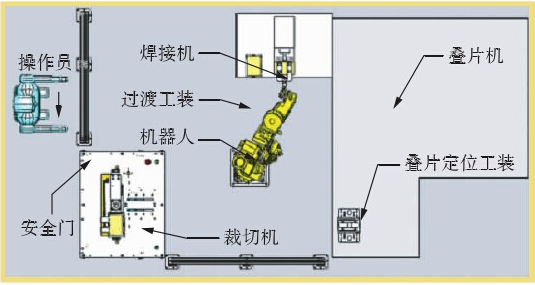[Industrial robots have become new tools to solve the pain points in the lithium battery industry and promote new growth in the lithium battery industry] Lithium batteries are widely used in energy storage power systems, electric vehicles, military, aviation and other fields, especially in recent years as the electric vehicle market is booming. Demand for batteries continues to rise. The current situation of the lithium battery industry can support these applications? According to relevant investigations, the current level of automation in the lithium battery industry is not high, production efficiency is low, and product stability is insufficient. Industrial robots are the weapon to solve this series of "pain points." Industrial robots in the lithium industry are imminent.
Lithium battery process and industrial robot applications:
Lithium battery process includes coating, slitting, baking, winding, assembly, welding, liquid injection, chemical conversion, volume separation, PACK assembly, etc. Lithium battery production line can actually use robots, including single processes and processes. Interconnection. However, at present, the robots are used more in the assembly, welding, chemical conversion, and packaging assembly lines of the outer packaging. The application of other links remains to be improved.

Introduction of industrial robots currently used in the lithium industry:
At present, the most used robots in the lithium industry are linear modular robots and scara robots, which are mainly carried out in the production line for carrying and changing models. Among them, SCARA robots have advantages in realizing rapid product transformation and replacing linear slides. In the production process of digital batteries, there are many kinds of products and they need to be changed frequently. Four-axis robots use more.
The power battery products are relatively single, but six-axis robots can be used on the rear end of the production line for handling and packing. At the front and rear ends of some devices, six-axis or four-axis robots can be used to load and unload the products, resulting in relatively large loads. .
In the PACK module assembly wiring, the heavy-duty six-axis robot performs module assembly work in the production line, and the arm length requirement is relatively long. In some equipment companies, AGV robots are also used to carry out the work.
Industrial robot selection of lithium production line:
In the selection of robots, the following factors need to be comprehensively considered: 1) weight holding capacity; 2) working space; 3) freedom and flexibility; 4) accuracy; 5) moving speed and application field.
According to relevant data, new energy vehicles will continue to maintain rapid growth in the next few years. In 2017, the demand for robots in the lithium battery industry exceeded 4,500. In the future, the application of industrial robots in the lithium battery industry will further expand and help the lithium battery industry to achieve new growth.
Hoist,Lever Hoist,Lever Blcok.Electric Powered Windlass,Diesel Powered Windlass,Diesel Engine Windlass,Electric Hoist complete with electric trolley
Detailed Product Description
Usage:Used to lift heavy objects in the lifting industry in various kind of working situations such as factory,working plant,mining,etc..It is compact size,reasonable weight, and easy to operate.
380V steel Wire Rope Electric Hoist with electric trolley
lifting capacity: 0.5t-10t
lifting height:6m-30m
electric windlass, electric powered winch, electric anchor windlass, Electric Hoist, Electric Chain Hoist
Yangzhou Qianyuan Electric Equipment Manufacturing & Trade Co.Ltd , https://www.qypowerline.com
